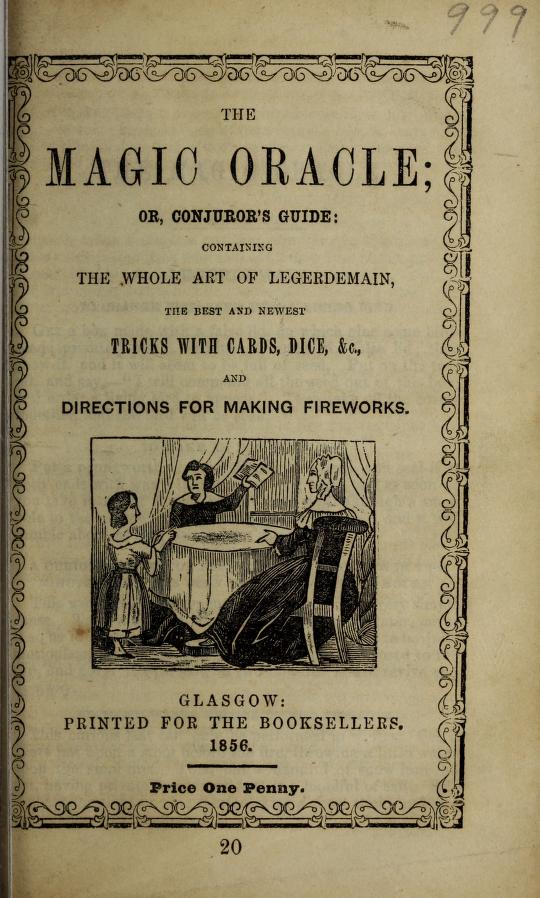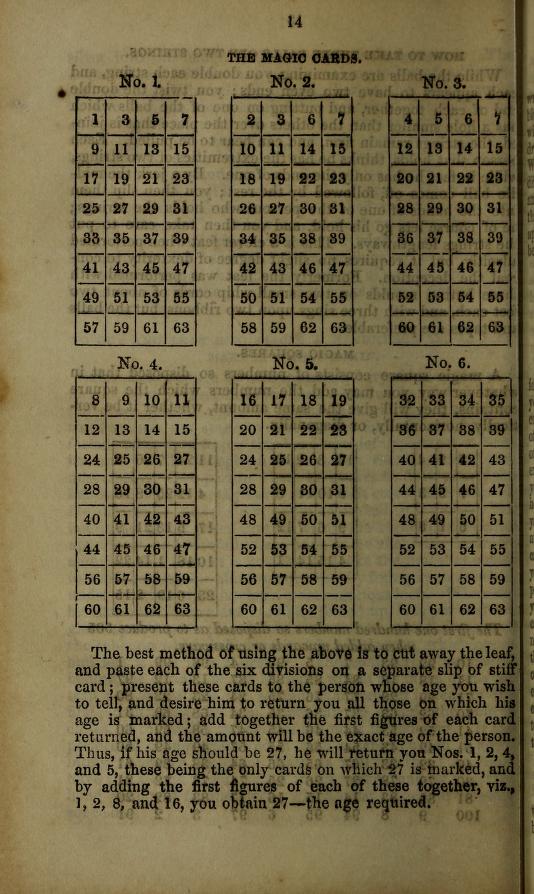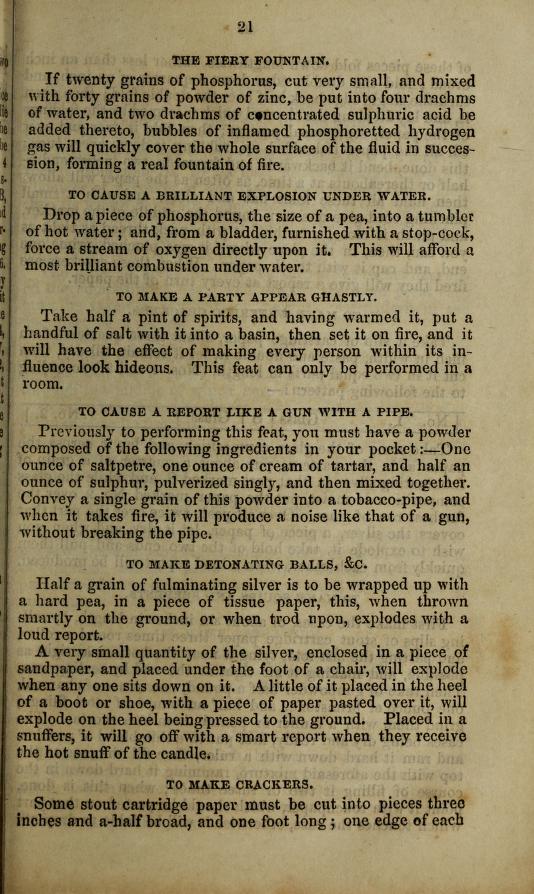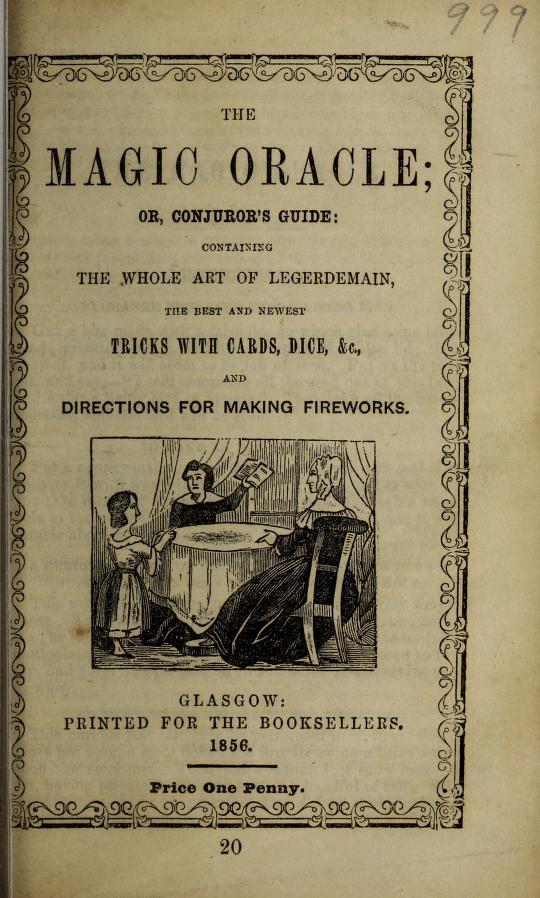Each week, the Fisher Library highlights a piece from its digitized collection on the Internet Archive. This week, Rachael kicks off spooky season by taking a look at an item from our Chapbook Collection.
It only seems appropriate now that it is October that we take a look at the chapbook titled “Magic Oracle; or Conjuror’s Guide; containing the whole art of legerdemain, the best and newest tricks with cards, dice &c., and directions for making fireworks.” This chapbook is credited to Joseph Crawhall and was published in 1856. So, what exactly is the “legerdemain” mentioned in the book’s title? Legerdemain is the skilled use of one’s hands when performing conjuring tricks. Basically, legerdemain is a fancy word for slight of hand magic tricks, which the first section of the book is devoted to. A trick to start the book is how to change bird-seed into a living bird. This illusion simply calls for a box to be made with a false lid and one hides a bird underneath the lid. The top of the false lid is then covered in bird seed (glued on) and when both lids are taken off together all that the audience sees is a bird.

“Magic Oracle” contains many “do not try this at home” style tricks, as well as some classics such as on page 11 in the chapter on tricks with cards and dice. One of these classics is “To tell the number thought of by a person,” or to guess which number someone is thinking of. “To tell the number thought of by a person” a math trick. “Desire the person to take one from the number thought of and to double the remainder, then bid him to take one from this double, and to add it to the number thought of; in the last place, ask him to tell you the number arising from this addition, add three to it, and the third of the sum will be the number required.” If you are skilled with numbers and are a quick thinker, you could dazzle someone with this math trick. Similarly, most of the illusions in this section of the book are carried out by adding and subtracting numbers in one’s head quick enough that the audience does not notice. The first trick in this chapter is how to tell any card in the pack selected by a person. “This is an excellent trick, and though quite simple, will be found to astonish an audience in which it is not known.”

The most exciting part of the book is a section towards the back on making homemade fireworks. This chapter includes instructions on making artificial fire balls, a “fiery fountain,” sky rockets, different coloured fire, and “luminous writing in the dark.” “Fix a small piece of solid phosphorus in a quill, and write with it upon paper; if the paper be then placed in a dark room, the writing will appear beautifully luminous.” One should definitely have a background in chemistry or science before they attempt any of these tricks at home!
If not, stick to making homemade slime with the kids and avoid testing out the “Waterloo Crackers.”

This chapbook is very fitting for the upcoming Halloween season. Halloween was not brought to Canada until the mid-to-late 1800s by Irish and Scottish immigrants. In Celtic Halloween customs, people wore costumes and masks to disguise themselves and ward off harmful spirits.
The climax of the book is “How to eat fire, and to blow it up in your mouth.” Unlike with any other tricks in this book, this one comes with a warning. “It is a very dangerous thing to be done, and although those that practise it, use all the means they can to prevent danger, yet it is seldom these fire-eaters have a good complexion.” So while you are going through this book be sure to practice a good amount of caution, or you could wind up losing your eyebrows!
-Rachael Fraser, TAlint student
